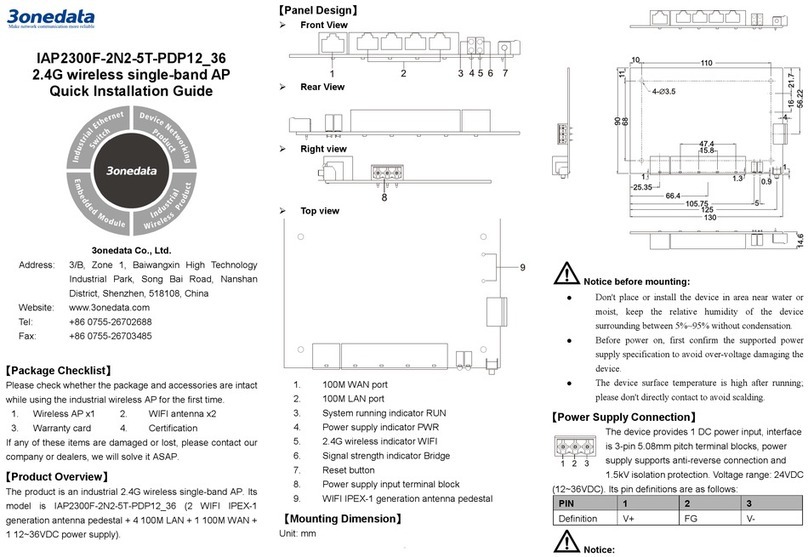
model Ⅲsupports 220VAC power supply
input. Power supply input range:
100~240VAC/DC.
Note:
Power ON operation: first insert the power supply
terminal block into the device power supply interface,
and then plug the power supply plug contact.
Power OFF operation: first unpin the power plug, then
remove the terminal block wiring part; please note the
operation order above.
【Serial Port】
RS-232 serial port
Model Ⅱprovides 1 RS-232 serial port and
adopts DB9 female. The pin definition as
follows:
RS-485/422 serial port
Model Ⅲprovides 1 RS-485/422 serial port
and adopts 5-pin terminal blocks. The pin
definition as follows:
RS-232/485/422 serial port
Model Ⅰprovides 1 RS-232 or
RS-485/422 serial port and adopts 8-pin
terminal blocks. The pin definition as
follows:
【Checking LED Indicator】
The device provides LED indicators to monitor the device
working status with a comprehensive simplified
troubleshooting; the function of each LED is described in the
table as below:
PWR
The device is powered on normally
OFF The device is not powered on or in
RXD
ON The fiber port is in abnormal
condition or disconnected
The fiber port is receiving data
No data receiving in fiber port
TXD
The fiber port is transmitting data
No data transmission in fiber port
【Specification】
EIA RS-232, RS-485, RS-422
RS-232/485/422 RS-232 or RS-485/422 serial
port, 8-pin terminal blocks
SC/FC/ST interface optional
Indicator
Power supply indicator, fiber port
data receiving and alarm
indicator, fiber port data sending
Input power supply
Model Ⅰ:
External power supply:
12~48VDC
Model Ⅱ, Model Ⅲ:
External power supply: 5VDC
Built-in power supply: -48VDC or
Access terminal DC round-head, terminal block
Temperature range
Model Ⅰ:
Operating temperature: -40~75℃
Storage temperature: -40~75℃
Model Ⅱ, Model Ⅲ:
Operating temperature: -10~60℃
Storage temperature: -40~85
℃
【Typical Application】
Fiber modem can extend the transmission distance of serial
signal over fibers, which should be used in pairs. The device
supports three types of serial port, RS-232/485/422. Users
can choose one of them to connect local terminal and remote
terminal. Two or three different types of serial ports are not
supported at the same time.
When connecting local and remote fiber ports, please
configure the parameters of fiber ports at both ends in the
same way, such as Transmit/Receive wavelength,
transmission distance, fiber type and so on.
The pin connection modes of each type of serial port are as
shown in the picture below.





















